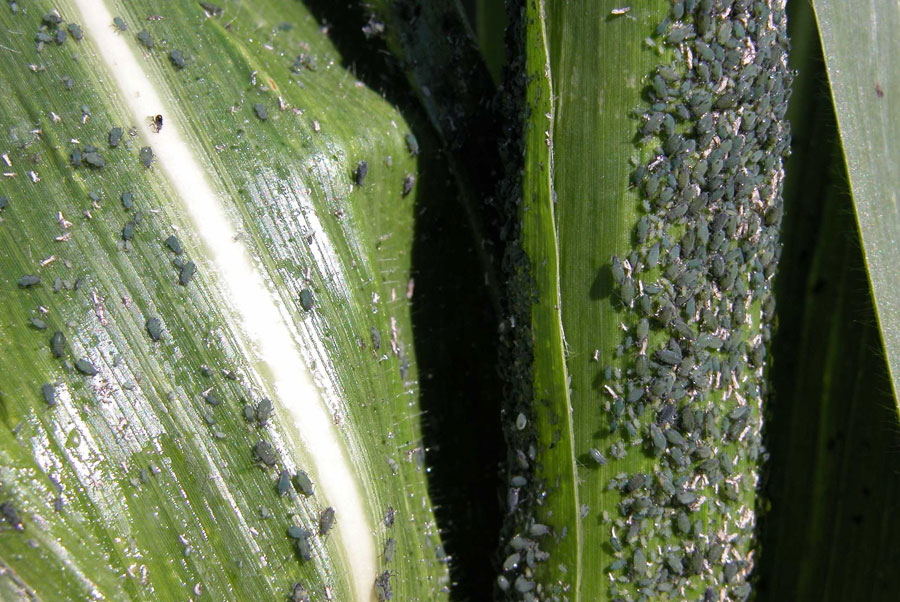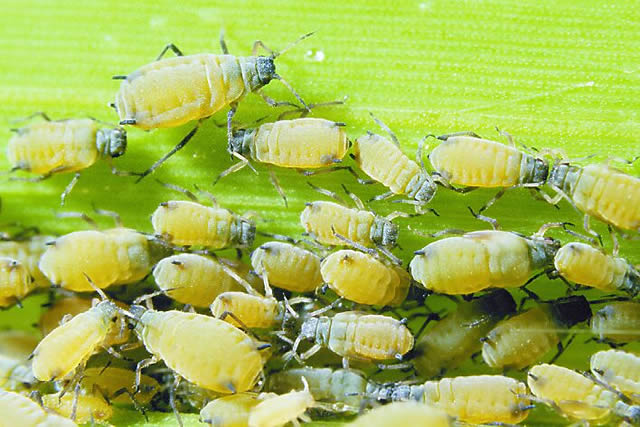Corn Leaf Aphid
Rhopalosiphum maidis
|
Dark blue-green corn leaf aphids. |
Pale, yellowish-green corn leaf aphids. |
The body of the corn leaf aphid can vary in coloration from pale, yellowish-green to dark blue-green, largely depending on temperature (they become increasingly pale at warmer temperatures). However, the antennae and cornicles (tail pipes) are always short, and the heads and legs are dark, with dark patches around each cornicle. Colonies are densely packed, often establishing within the whorl, then spreading out onto the upper surfaces of the leaves. In later plant growth stages, they will feed on the stems, tassels and developing ears.
Only very large numbers of corn leaf aphids post-tasseling will have any impact on the yield of field corn, and chemical treatment is not recommended. Although they excrete substantial amounts of honeydew, they do not cause chlorosis, loss of leaf function, or leaf death in the way that other aphids can, and plants in vegetative growth stages can easily compensate for the photosynthate they remove. However, they serve as food for aphid parasitoids and various generalist predators, attracting them into the field where they assist in controlling other corn pests. For example, the insidious flower bug, Orius insidiosus, is an important predator of moth eggs such as those of corn earworm and fall armyworm. Although these bugs are strongly attracted to corn pollen, the presence of corn leaf aphids prior to tasseling will draw them into the field earlier, ensuring their presence before harmful moth species begin laying eggs on emerging tassels.
Page last updated 3/28/2024 by J.P. Michaud.

